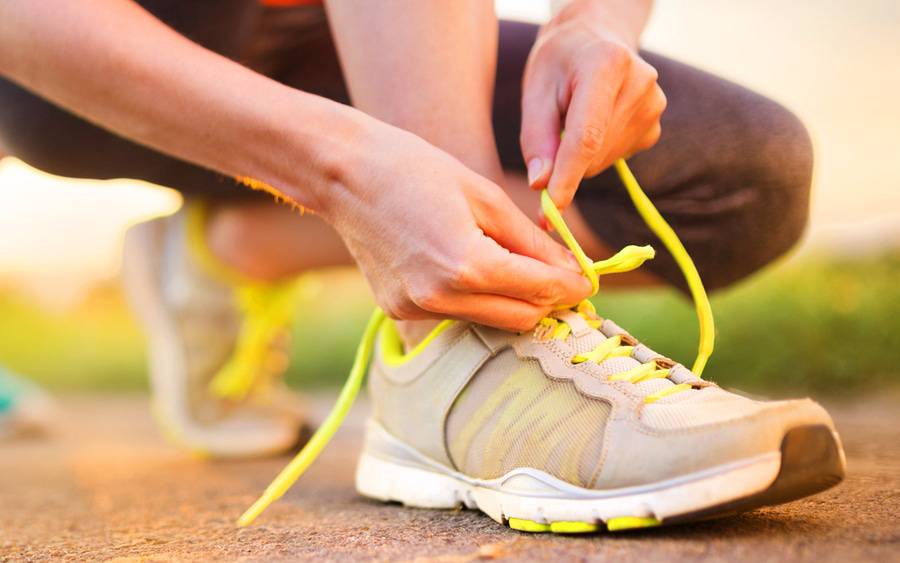How to Start Running: 6 Tips for Beginners
Do it safely during the pandemic and enjoy the health benefits

Do it safely during the pandemic and enjoy the health benefits
Hitting the track or jumping on the treadmill is a great way to get in shape. If you’re not already a runner, however, starting to run may seem intimidating. It may seem difficult to do also during a pandemic when gyms are closed or have limited access and restrictions.
But getting regular exercise is one of the most important things you can do for your health any time, and running outside or at home, if you have a treadmill, is something you can look forward to doing regularly.
“Exercise is especially important now because it can reduce stress, prevent weight gain, boost the immune system and improve sleep,” says John “Ed” Fellow, MD, a sports medicine physician at Scripps Clinic Rancho Bernardo. “You can start running and get all these health benefits and really enjoy it.”
If you decide to start running, do so gradually and safely,” Dr. Fellow says. “Like most things, running is a process that you need to build up to, especially if your plan is to run regularly and prevent running injuries.”
1. Run safely
You might be asking whether it’s safe to go outside to exercise during the pandemic. The answer is yes. You can go outside for a walk or hike, a bicycle ride or a run. Just do it safely and follow social distancing guidelines.
In San Diego County, stay at home orders allow going outside for exercise if you can keep six feet away from people who don’t live with you and wear face covering when within six feet of others. The county recommends avoiding groups and crowded outdoor spaces and not going out if feeling sick.
Remember you can exercise at home too. You have options.
2. Start with a slow jog
Instead of racing a 5K, which is 3.1 miles, for your first run, Dr. Fellow recommends starting out slow and light or easy — perhaps at 10 percent of your capacity for 10 minutes — to prevent injury and excessive soreness. Every 10 days or so, increase the distance and/or speed you run by 10 percent. Run only one to three days per week to start out and increase your distance over time.
3. Find soft surface to run
Remember the goal is to keep running, and not just completing one race, which is why where you train is so important.
Start out on softer surfaces, such as a treadmill or track, instead of hard pavement. It can help prevent strains and other injuries to new runners.
If you get ambitious and want to participate in a race, consider doing a virtual race, which is a race you can run at any location, at your pace, outside or on a treadmill.
4. Get the right running shoes
“You may run differently than you walk or stand,” notes Dr. Fellow. “One of the best ways to see what your feet are doing is to have someone record you running from the front, sides and back. Take time to really look at your posture, alignment and what your feet and body are doing during your stride.”
Different shoes are designed to provide different kinds of support for people with strides that land on the inside, outside, front or back of the foot — and that can make a difference in comfort and the potential for injury.
Once you know how your foot is striking the ground, you can get the right shoes to meet your stride. Change running shoes every three months or 300 miles; the cushioning breaks down over time.
5. Stretch to prevent running injuries
“One of the biggest mistakes people make is that they don’t stretch or vary their workouts,” says Dr. Fellow.
“I recommend a balanced approach and low-impact activities, such as cross training, biking, elliptical training or swimming. Runners, like all athletes, need to customize their stretches,” he adds. “Think in terms of twos, such as: front and back, right and left or top and bottom. The body is circular in shape, and muscles are made to be balanced. Muscles work in tandem.”
6. Listen to your body
Soreness can accompany any physical activity but think twice if it persists or worsens for more than a couple of days or limits your activities. To reduce pain or soreness, stretch before, during and after a run. Ice your muscles after strenuous activities and/or try applying heat even before running.
Warm up and cool down your pace as well. Taking an anti-inflammatory, like naproxen or ibuprofen, can also help reduce pain and minor swelling. Although these medications are available over the counter, you need to be aware that all drugs have risks — and may have specific risks for you. Consult your physician to understand how and when to use them safely.
If pain goes beyond typical post-workout soreness, causes dysfunction, limping or causes other pains, it is time to call your doctor.